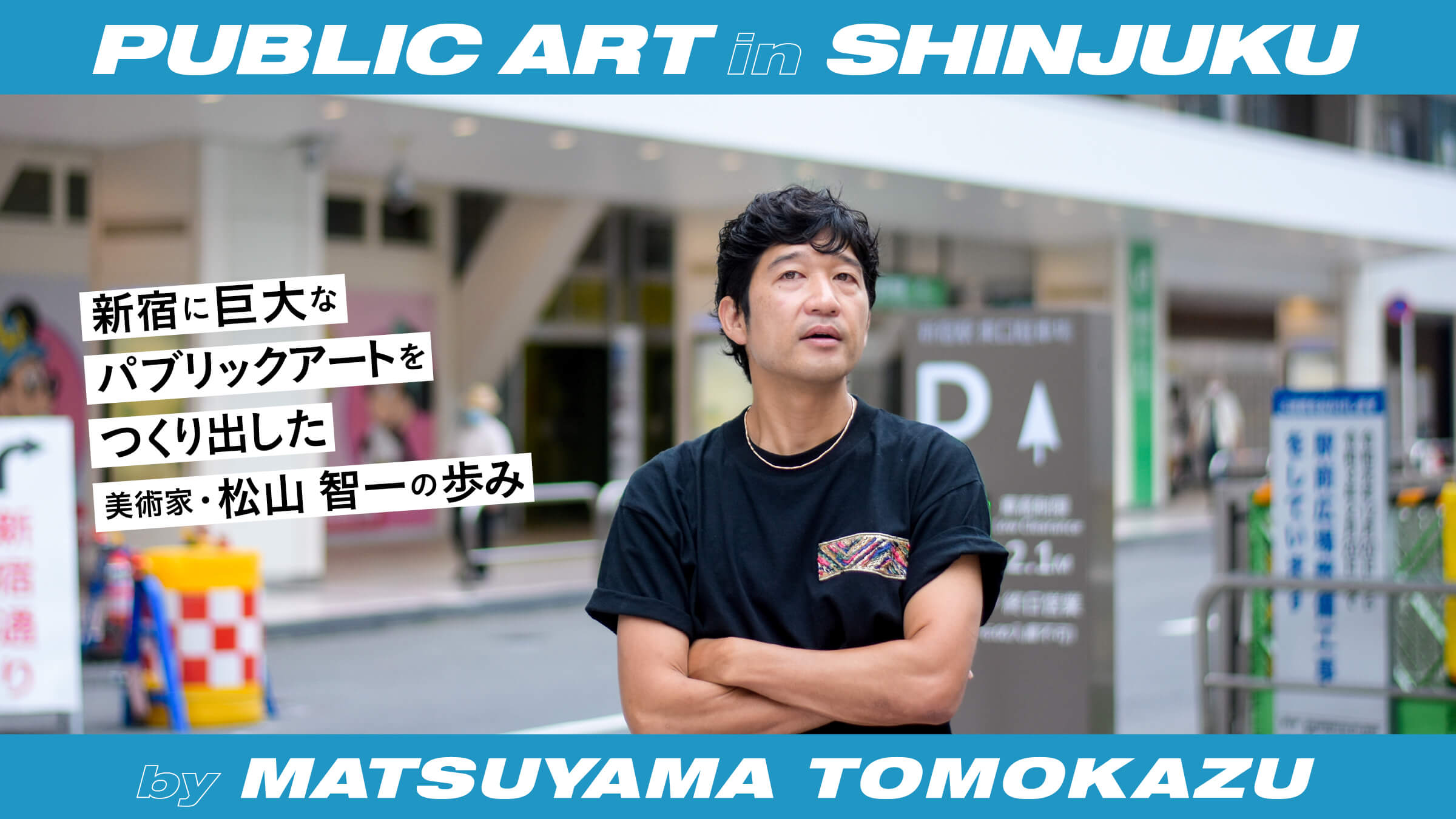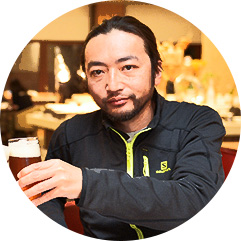Doing something unprecedented is another zero to one thing an artist can do.
I think I understand the true purpose of Matsuyama-san's first solo exhibition in Tokyo in 10 years. You mentioned earlier that there is no precedent for a large-scale public art space in front of Shinjuku Station, and I think that you are setting a precedent in many ways.
Matsuyama:This is true of Japanese society as a whole, but there is an extremely high hurdle for things that have no precedent. On the other hand, people tend to jump on things that have already produced good results. Of course, it is true that there was a very high hurdle to overcome in terms of setting a precedent for this project. However, both Lumine and JR had a big slogan of wanting to create culture as a corporate entity, so we overcame various difficulties and managed to make it happen.
What do you think is the root problem that has prevented so many of these places from being created in Tokyo?
Matsuyama:The reason why we do not see many works by Japanese artists in major places in Tokyo until now is because the companies and the government did not see any real value in them. The mecenat (*3) that was established during the bubble period is still questionable as to how beneficial its activities are in reality. For example, in the United States, Europe, and China, which are so-called advanced art countries, cultural resources are intentionally created in the city to attract many people as tourism resources. This is something a company should do. I usually live in New York and am often asked by my friends there, "Where should I go to see Japanese art? I am often asked by my friends there, "Where can I go to see Japanese art? For example, there is the Spider by Louise Bourgeois (*4) in Roppongi Hills, but from their point of view, they really don't have many places they can recommend to see unique Japanese art. So, in the end, they have no choice but to go to Naoshima (*5).
3 Activities aimed at supporting arts and culture mainly by corporate entities. In Japan, it was launched during the bubble period in the late 1980s.
4 A well-known sculptor and printmaker from Paris.
5 Known as an island of art in Kagawa Prefecture, the Setouchi International Art Festival held every three years attracts many people from around the world.
Certainly, when looking for a uniquely Japanese art spot in Tokyo, the only thing that comes to mind is Taro Okamoto's painting (*6) in Shibuya Station.
6 "Myth of Tomorrow," a large work by Taro Okamoto, is displayed in the connecting passageway between Shibuya Station on the JR Line and Shibuya Station on the Keio Inokashira Line.
Matsuyama:That's right. For example, in New York, there is Grand Central Terminal, and in London, there is Victoria Station, both of which are well established as cultural resources and tourist attractions. They are listed in books such as "Chikyu no Arukikata" as places to visit. However, Shinjuku is a huge terminal station with the highest number of daily public transportation passengers in the world and is listed in the Guinness Book of Records, but it is far from being a cultural resource. From this perspective, Tokyo has very few such places. It is up to companies and government agencies to intentionally create such places and actively promote their culture.

Creating art and delivering it require completely different skills.
Whenever I visit such public places overseas, I am reminded of the gap between Japan and other countries.
Matsuyama:Japan has been an economic superpower up to now, but now it is becoming one of Asia's leading countries. In such a situation, no matter how much one says "Japan has its own unique culture," it will not be convincing unless a new place is created to disseminate it. It is not just one artist or group that can start such a project, but a nation or a corporate entity. This is definitely something we should continue to do in the future. I am very happy that we were able to realize this in this project, where over a period of two and a half years, people of completely different positions and social attributes came together as one team with the same aspirations, and realized a project on a scale that was impossible in a place where it had never been possible before. I think it is wonderful that we were able to set such a precedent.
You said that you had to start by raising awareness of this issue itself.
Matsuyama:I believe that creating a work of art and delivering it require completely different skills. When you look at world-renowned artists such as Banksy and Cowes, they are always trying to "deliver" their works through a different channel than creating the works themselves. I think the Banksy shredding incident is just like that.
What exactly do you mean by the difference between "creating and delivering"?
Matsuyama:The creative activities that we artists engage in in our atelier are a part of our daily life, or rather, a very natural part of our daily life. For example, when starting a project such as this one, if I simply put my work into the space, it would end up being self-indulgent, and if I did it as part of urban development from the perspective of an environmental designer, it would be tasteless and odorless. I have to think about how I can make my art coexist with this place and give it cultural meaning as a work of art that includes the surrounding environment. This requires the utmost teamwork, as well as a sense of responsibility and persuasiveness.
So it's a question of whether or not you can complete the project on your own.
Matsuyama:As an artist, I am most excited about the prospect of setting a precedent for other artists, whether they are working with corporations or government agencies, by following the proper procedures. When I first heard about the idea, I was sure that I wanted to make it happen because I felt that Shinjuku's uniqueness would become Tokyo's uniqueness and eventually become a part of Japan's uniqueness when seen from the world's perspective, which is why I felt it was so significant.











